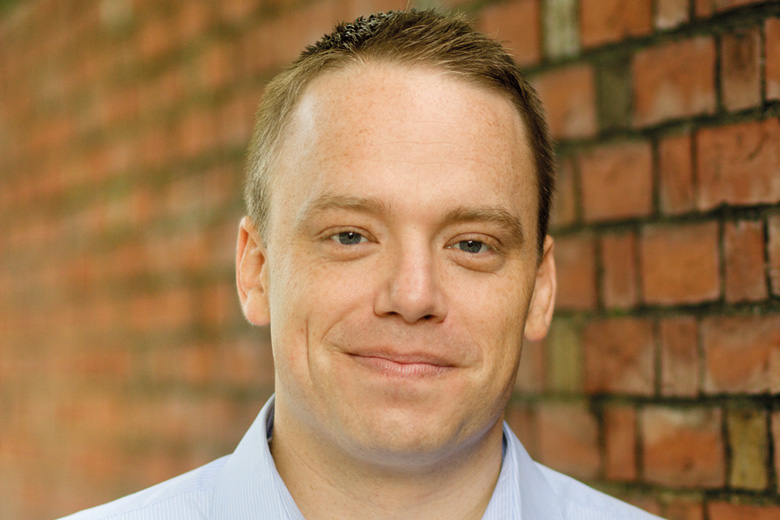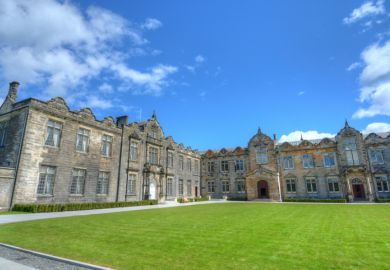There is no such thing as an average person.
In the late 1940s, the United States Air Force couldn’t understand why pilots found it so physically difficult to keep control of their planes. After all, the cockpits had been designed to fit the dimensions of the average pilot. Yet when researchers measured more than 4,000 pilots, they discovered that not a single one was average (defined as among the middle 30 per cent) for every one of the 10 different parameters they looked at. Even if only three parameters were examined, just 3.5 per cent of the pilots counted as average. The sizes of their necks, wrists and thighs, for example, just didn’t correlate closely with each other – so a cockpit designed for the average pilot was unsuitable and indeed dangerous for virtually every individual pilot.
This story exemplifies the central theme of Todd Rose’s new book, The End of Average: How to Succeed in a World that Values Sameness. The book, published this week, aims to highlight the costs of such “averagarianism” and to set out what it might mean to embrace a “science of the individual” instead. Threaded through it is a description of Rose’s own career, whose vicissitudes inform some of his conclusions. After dropping out of high school, he supported his family on a series of minimum-wage jobs, including one as “an in-home nursing assistant performing enemas for $6.45 [£4.43] an hour”. When he did manage to secure a place at college, he continued working full-time but still had to resort to stealing toilet paper, while his wife sold as much blood plasma as she was legally allowed to.
Yet it all eventually ended well. Fifteen years after dropping out of school, Rose joined the faculty of Harvard University’s Graduate School of Education. He is now interim director of its mind, brain and education programme, whose projects include one led by a computational neuroscientist looking at how people achieve “mastery” in a variety of different fields. According to his faculty page, he is also the co-founder and president of the Center for Individual Opportunity, “a non-profit organization dedicated to maximizing opportunity using the science of the individual”.
Much of Rose’s success in turning his life around obviously came down to sheer hard work, yet on several occasions he made a conscious decision to ignore what instructors and academic advisers were telling him about the best ways to learn or the right order to take courses in. Although their suggestions might have been appropriate for an “average” student, all that mattered to him, he says, in an interview with Times Higher Education, was whether they suited his particular needs. There are often several different pathways to success.
In the abstract, this may sound like a pretty uncontroversial claim. Yet Rose believes that research has often focused misleadingly on identifying a single average pathway, whether in how children learn to crawl or how colorectal cancer develops. This can have disastrous effects by stigmatising those who adopt alternative techniques or limiting treatment options.
“It’s not useful to say: ‘Everyone’s a snowflake.’ That’s probably true at some level, but it doesn’t make for good science,” Rose says, referring to the fact that every snowflake is unique. The problem is that “we’ve confused abstraction with generalisability”, where the latter term refers to “a finding which would be applicable to everybody”.
The reasons for this confusion are pretty clear, he thinks. Statistical techniques enable us to draw conclusions about populations from a sample. Another branch of mathematics, ergodic theory, then allows us to deduce statements about individuals, provided certain conditions are met. Since these conditions essentially require – entirely implausibly – that members of the population are “frozen clones”, identical and unchanging, Rose is unsurprised that much research produces claims that are unconvincing and unhelpful. Instead of “assum[ing] individuals have relatively stable behaviour”, he argues in an article, “The science of the individual”, co-written in 2013, we would do far better to adopt a “dynamic systems approach, [which] starts by assuming individuals vary, and seeks to identify stable patterns within that variability”. This, of course, requires rather different training and analytical tools.
“The fields that have figured this out the quickest,” Rose says, “are those where you’ve just gotten access to a lot more individual data and where there’s a moral imperative [to make the best use of it]. In cancer research, for example, it does really matter if you get things wrong.” In order to hasten the demise of averagarianism in other fields, Rose and his team are creating “a free, online tool for young scholars to understand what methods they should use, with datasets and examples”.
The End of Average also has radical implications for universities, which tend to be pretty rigid in their pacing of learning and the number of “seat hours” they require students to put in over three or four years to gain a degree or diploma.

“The challenge for universities,” Rose says, “is that we’re really not doing a good job of matching skills to jobs [and] costs are out of control. We need to be solving this problem, otherwise the market will. Employers will say ‘Let’s just go to the [cheaper] online providers and get exactly the skill set we want’...I think that would be a disaster. The worst thing you could do is be trained only for whatever Google wants right now.” Among the dangers of this scenario, in Rose’s view, is that it could lead to a two-tier system, with the privileged getting “a rich, robust education” and the poor getting basic job training in the form of “nano-degrees”.
In order to rise to this challenge, Rose believes that universities need to stop offering “a batch process” and cater far more flexibly to what real individual students (rather than idealised average students) need. Institutions should switch their focus from “grades” to “competency”, partly determined by employers and professional associations, so that students acquire the job-related skills they require and employers become stakeholders in the university system.
There are two obvious problems with grades. By reducing very different factors, such as achievement, attitude, behaviour and effort, to a single mark, they tend to represent a very crude measure. And it is arguably not a very useful measure either. As a father of two college-age sons, Rose just wants them “to develop the skills they need. I don’t particularly care about their relative rank in their class. I want them to be able to master things to the best of their ability.”
In addition, universities should recognise the fact that different people learn at different speeds, and that this does not affect their eventual ability to perform a task. “Once you accept that,” he says, it becomes “unacceptable to have a system that rigidly fixes the amount of time you have to learn.” This means that universities need to “think about how we are going to get away from a system where everybody sits in a class for a certain amount of time and we give you a grade at the end.”
Universities also need to move away from diplomas or degrees, at least as their only major offering, and to start providing “credentials” for “the smallest meaningful unit of learning”. In Rose’s ideal world, students who wanted to obtain larger suites of credentials could opt to obtain them from a range of different institutions (at their own pace), through massive open online courses, individual study or private tuition.
“If we just sit here arguing in defence of the diploma [or degree], we’re not going to win,” he says. “That doesn’t have a scientific leg to stand on and it doesn’t really address the problems of our society. I get why the diploma made sense from a systems perspective. It’s much easier to budget when everybody we admit has to be here for four years and they’re all going to have to take some of the same classes.” Yet if universities are truly to play their role in “helping young minds figure out what they are passionate about, and acquire the knowledge and skills they need for a career they actually want”, they need to become much more flexible.
Asked to elaborate on his book’s proposal to “let students determine their educational pathway”, Rose stresses that he doesn’t mean “catering to student whims. But there are educationally relevant choices that, right now, we take away from the students. We don’t trust them to make decisions on their own behalf” over issues such as which classes to take, when to take them and in what order. This he sees as a development of “Taylorism”, the early 20th-century model of mass production that “took away any kind of say for workers, on the grounds that the average person is just too dumb”. It is also based on the assumption that “the system is more important than the individual, which leads you to make certain choices, such as going for efficiency over everything else”. This is no longer appropriate, and universities are going to have to give students “a little bit more of an ownership stake in their own education”.
None of this is going to be easy. The End of Average cites an interesting study by the European Research Council that looked at “the development of young female scientists” and “whether there really [is] such a thing as a standard pathway for a scientific career of excellence”. Very much in the spirit of Rose’s general argument about multiple pathways, this determined that different scientists achieved excellence though different routes, which it likened to a “quickstep” or “foxtrot” (rapid promotion), a “Viennese waltz” (slow but steady progression) and a “slow waltz” or “tango” (“featuring a series of movements in and out of science, including periods of unemployment”). Lead researcher Claartje Vinkenburg, associate professor of organisational behaviour at the VU University Amsterdam, told the journal Science that “you can have an excellent [research] idea while taking care of seven kids or [looking after] a sick parent, or being in the lab 24 hours a day. It [shouldn’t] matter how you got there.”
It may be a while before universities’ recruitment and promotion policies truly take this on board. Yet Rose believes that he is at the heart of an intellectual revolution that both universities and researchers need to take with the utmost seriousness.
“I love being a scientist and would be happy just to do that,” he reflects. “But we are having these paradigm shifts [away from averagarianism] and there are certain things one can do to catalyse that change. Hopefully I’m in a position to make a contribution there, too.”
Todd Rose’s The End of Average: How to Succeed in a World that Values Sameness is published this week by Allen Lane.
POSTSCRIPT:
Print headline: Names, not numbers
Register to continue
Why register?
- Registration is free and only takes a moment
- Once registered, you can read 3 articles a month
- Sign up for our newsletter
Subscribe
Or subscribe for unlimited access to:
- Unlimited access to news, views, insights & reviews
- Digital editions
- Digital access to THE’s university and college rankings analysis
Already registered or a current subscriber?




